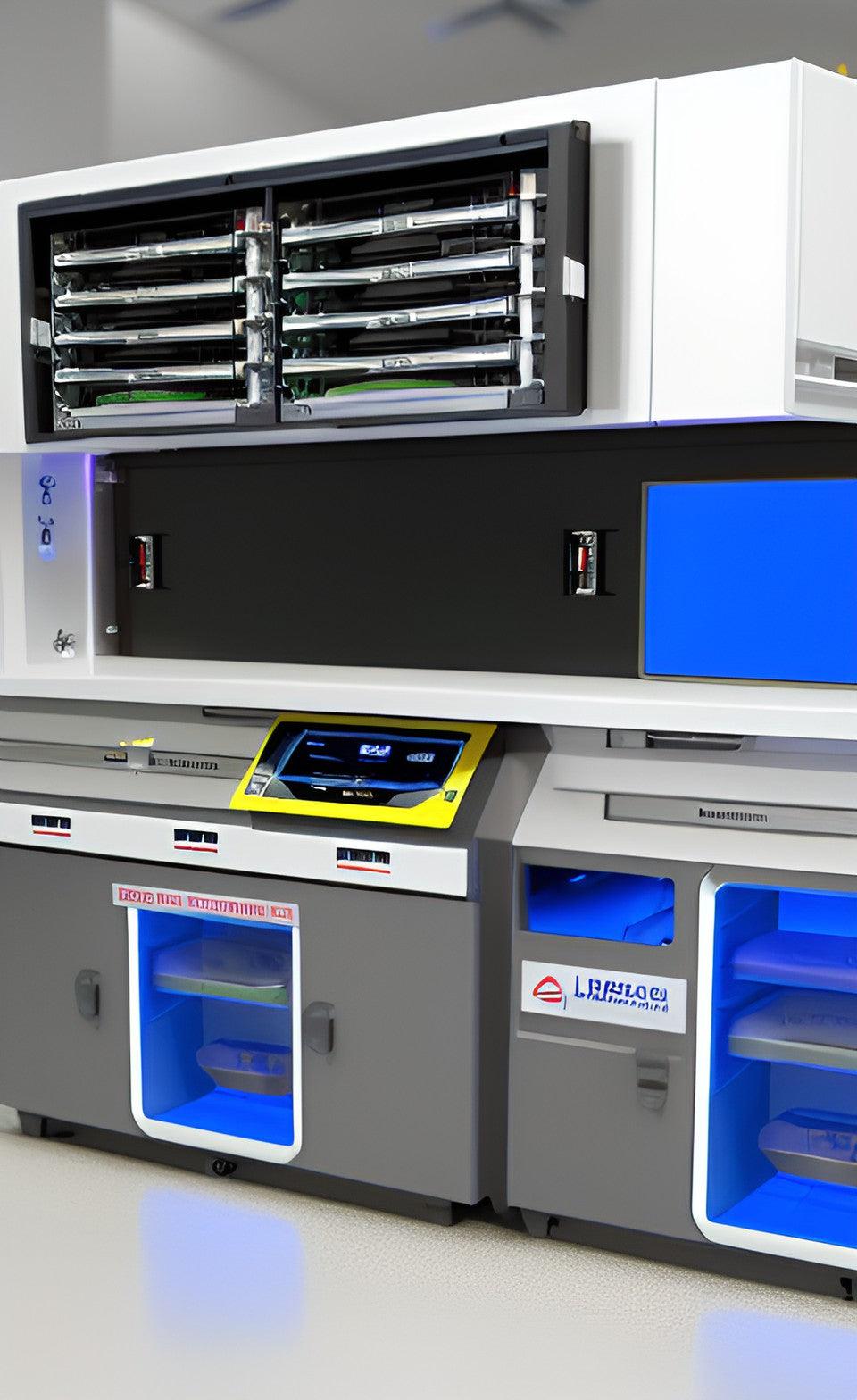Research and Advancements in Thrush Treatment


The significance of research and advancements in thrush treatment cannot be overstated. As Candida species continue to evolve and develop resistance to conventional antifungal medications, finding new and effective treatments becomes increasingly important. By investing in research and development, medical professionals can better understand the mechanisms behind thrush infections, leading to more targeted and effective treatments for patients. Additionally, advancements in diagnostic techniques and non-pharmacological treatment options can improve patient outcomes and overall quality of life.
Presently, thrush treatment primarily revolves around the use of antifungal medications, which can be administered topically or orally depending on the severity and location of the infection. These thrush treatments are generally effective in managing the symptoms of thrush, but resistance to these medications is becoming more prevalent. As a result, the need for continued research and advancements in thrush treatment is paramount to ensure the development of novel therapies and improved patient care.
Historically, people have relied on various home remedies to treat thrush, such as rinsing the mouth with warm salt water, applying natural yoghurt to the affected area, or using a diluted apple cider vinegar solution. While these remedies may provide some relief for mild cases, their effectiveness has not been scientifically proven and may not be suitable for severe or persistent infections.
The development of early antifungal medications marked a significant step forward in the treatment of thrush. Nystatin, discovered in the 1950s, was one of the first antifungal agents used to treat Candida infections. Over time, other antifungal medications were developed, including azoles like fluconazole and itraconazole, which have become standard treatments for thrush.
Over the years, thrush treatment options have evolved to include more targeted and effective therapies. Advances in pharmacology have led to the development of new antifungal medications with fewer side effects and improved patient adherence. Moreover, research into non-pharmacological treatments, such as probiotics and natural antifungal compounds, has opened up new avenues for thrush management.
One significant development in the field of antifungal medications is the introduction of new formulations and delivery methods. These advancements have resulted in medications with improved bioavailability, allowing for more effective and targeted treatment of thrush. Examples include extended-release tablets, topical films, and buccal tablets, which can deliver the medication directly to the affected area.
Research has also led to the development of more effective and targeted antifungal medications. These drugs are designed to specifically target the Candida species responsible for thrush, reducing the likelihood of resistance and minimising the impact on beneficial microorganisms in the body. One such example is the echinocandin class of antifungal medications, which inhibit the synthesis of an essential component of the fungal cell wall, leading to the death of the Candida cells.
Recent advancements in antifungal medications have also focused on reducing side effects and improving patient adherence. By developing drugs with fewer side effects and more convenient dosing schedules, researchers aim to increase patient compliance and improve overall treatment outcomes.
Recent advancements in antifungal medications have also focused on reducing side effects and improving patient adherence. By developing drugs with fewer side effects and more convenient dosing schedules, researchers aim to increase patient compliance and improve overall treatment outcomes. For instance, newer antifungal medications, such as posaconazole, have been found to cause fewer adverse effects compared to older medications.
Probiotics, which are beneficial bacteria, have garnered attention as a potential non-pharmacological treatment for thrush. Some studies suggest that probiotics, particularly Lactobacillus species, can help restore the balance of the body's natural microbiome and inhibit the growth of Candida. For example, a 2011 study found that certain Lactobacillus strains reduced the adhesion of Candida cells to vaginal cells, suggesting their potential use in thrush prevention and treatment.
Research into natural antifungal compounds has also shown promise in the treatment of thrush. Various plant extracts, essential oils, and other natural substances have demonstrated antifungal properties against Candida species. One such example is the use of tea tree oil as a potential treatment for oral thrush. However, further research is needed to establish their efficacy and safety for use in clinical settings.
Emerging therapies, such as photodynamic therapy (PDT) and immunotherapy, are also being explored for their potential in treating thrush. PDT, which involves the use of light-activated photosensitising agents, has shown promising results in vitro against Candida species. Immunotherapy, on the other hand, aims to harness the body's immune system to fight against the infection. While these novel therapies hold promise, further research is needed to determine their effectiveness and safety in treating thrush.
Technological advancements have led to improved accuracy and speed of thrush diagnosis. Rapid diagnostic tests, such as PCR-based methods, can quickly identify the presence of Candida species, enabling prompt and targeted treatment. This is particularly important for severe or systemic infections, where early diagnosis and treatment can significantly improve patient outcomes.
The development of rapid point-of-care tests has further enhanced the diagnosis of thrush. These tests can be performed at a patient's bedside or in a clinic, providing results within minutes. The T2Candida panel, for example, is a rapid diagnostic test that can identify multiple Candida species directly from whole blood samples, streamlining the diagnostic process and facilitating timely treatment.
Technological advancements have led to improved accuracy and speed of thrush diagnosis. Rapid diagnostic tests, such as PCR-based methods, can quickly identify the presence of Candida species, enabling prompt and targeted treatment. This is particularly important for severe or systemic infections, where early diagnosis and treatment can significantly improve patient outcomes.
The development of rapid point-of-care tests has further enhanced the diagnosis of thrush. These tests can be performed at a patient's bedside or in a clinic, providing results within minutes. The T2Candida panel, for example, is a rapid diagnostic test that can identify multiple Candida species directly from whole blood samples, streamlining the diagnostic process and facilitating timely treatment.
Advancements in genetic testing have also played a role in identifying predisposition to thrush. By examining an individual's genetic makeup, researchers can better understand their susceptibility to Candida infections, potentially allowing for more personalised treatment approaches and prevention strategies.
As resistance to current antifungal medications continues to grow, research is focused on identifying potential targets for new antifungal medications. This includes investigating the molecular mechanisms behind Candida virulence and resistance, as well as exploring the use of novel drug delivery systems to enhance the effectiveness of existing medications.
An improved understanding of Candida species and their resistance mechanisms is crucial for the development of more effective thrush treatments. By studying the various factors that contribute to Candida resistance, researchers can work towards designing medications that can overcome these challenges and provide better patient outcomes.
As our understanding of the genetic and environmental factors that influence thrush susceptibility increases, there is a growing focus on personalised medicine and tailoring treatment to individual patients. This approach may involve using genetic testing to determine the most effective treatment strategies for a particular patient or developing targeted therapies based on an individual's specific Candida strain.
In summary, research and advancements in thrush treatment have come a long way, with significant improvements in antifungal medications, diagnostic techniques, and non-pharmacological treatments. These developments have enhanced our understanding of thrush infections and enabled more effective management for patients.
Continued research and development in the field of thrush treatment is essential to improve patient outcomes and stay ahead of the growing resistance to antifungal medications. By focusing on areas such as new drug targets, improved understanding of Candida species, and personalised medicine, researchers can help shape the future of thrush treatment and prevention.
Finally, it is vital that we continue to support research and development in the field of thrush treatment. Ongoing investment in research, as well as collaboration between scientists, clinicians, and industry partners, is key to driving innovation and improving treatment to thrush.










Plus get the inside scoop on our latest content and updates in our monthly newsletter.